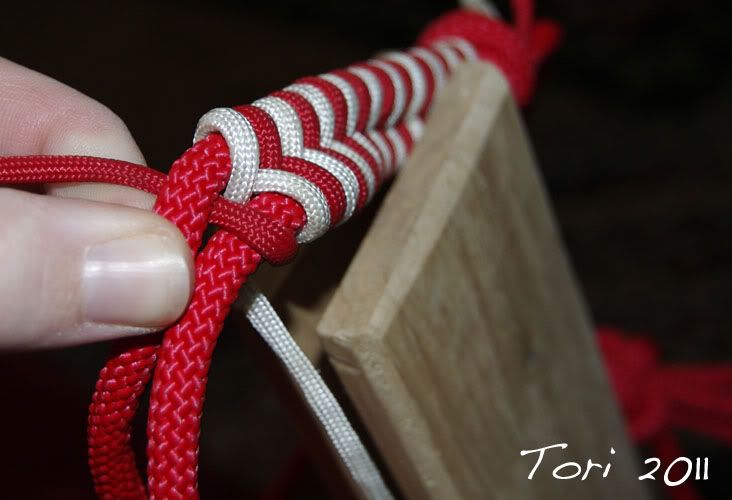I've also added wrapped nosebands to many of the floppy halters to make them more decorative and provide a little more stiffness for those who wants something in between.
At home we always use the stiff halters, because they offer more subtle signals to the horse and a more clear release of pressure rather than just hanging on the horse's face. It took a long time to find a decent supplier of stiff rope that lends itself well to holding knots but we've finally found a few varieties that work well. For the most part we've stuck to solid black with our line of stiffer rope halters.
FIT:
There are a lot of rope halters out there that either fit horses poorly or are not properly fitted and tied. The most common problem I see are halters that are too loose, where the throat latch is not snug up behind the cheeks. The halter below is adjusted so that it is too loose, it would be easy for a horse to get a hoof caught in this one:
Here is the same halter snugged up but it is still too big around the nose for this horse:
This is very typical where a "granny knot" has been tied to the loop, this will wear out your loop and the knot has the potential to loosen up as the horse moves.
This halter is tied with a half hitch, however the tail is coming out the front and could poke the horse in the eye
How to properly tie your halter:
The tail of the poll strap should be pulled through the loop, wrapped around and then pulled through itself. This will assure that your loop will not wear out and the knot can be easily loosened and untied regardless of how tight it gets. Do be careful not to get your fingers stuck through these knots as you are tying things onto a horse that may suddenly move and catch a finger in the rope.
As far as proper fit, here is a good example of what your halter should look like. Fitted with the throat latch back behind the cheeks and snug enough to minimize the potential of getting snagged on things.
There should be some play in the noseband, it should not be tight and it should not be so loose as to allow for a horse to put a foot through it.
FUNCTION:
Halters, regardless of type, are a very common piece of equine equipment that are frequently abused. There is no need for people to be jerking horses around with a halter and misuse can cause damage to your horse's face. Also allowing horses to pull back in halters can cause a lot of damage. It is better to fix it up for the horse to understand how to stand tied or just refrain from tying a horse that has a problem setting back. A horse that has developed a habit of setting back, or a horse that has flipped over, might benefit from visiting an equine body worker of some type to evaluate what damage has already been done.
There are folks who purchase rope halters because they feel the halters have more "bite" and therefore offer more "control." Perhaps they think that the rope halter is going to replace a stud chain. I will not sell a halter to folks that have this mindset. The rope halter is thinner than a flat web halter so by basic physics it is easier to offer more subtle direction to a horse. Like a signal bit on a bridle horse, a rope halter is a tool of refinement, not meant to be more harsh. Ultimately the halter can be a good tool for communication or hurtful to the horse depending on the intent of the person at the other end of the lead rope.

















Thank-you Tori for the halter tying demonstration.
ReplyDeleteExcellent. :)
ReplyDeleteHow do I go about ordering one of your halters?
ReplyDeleteYou can e-mail me at Tori@snowyridgeranch.com or Natrlhorse@hotmail.com and I would be happy to make some up for you.
ReplyDelete